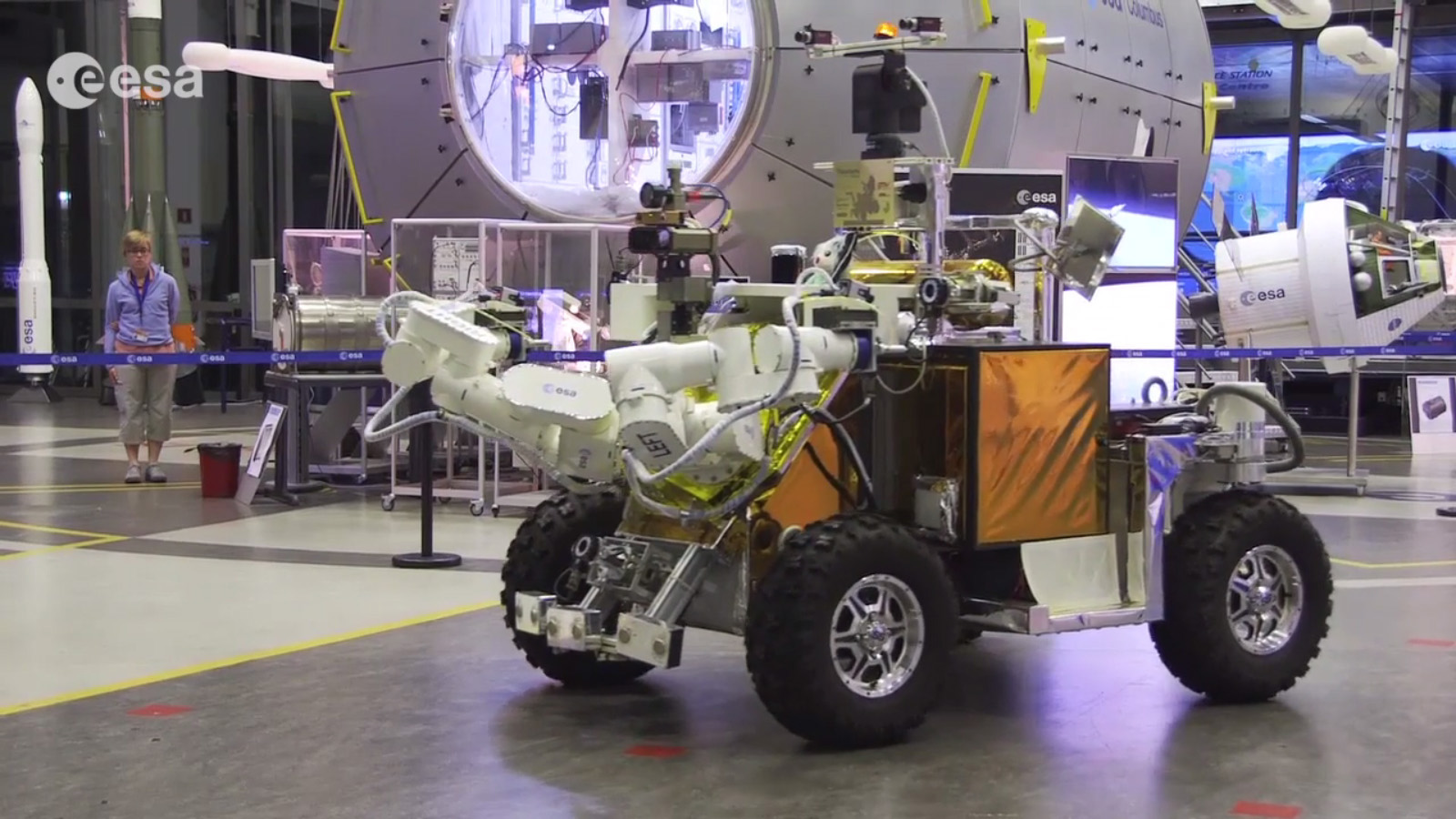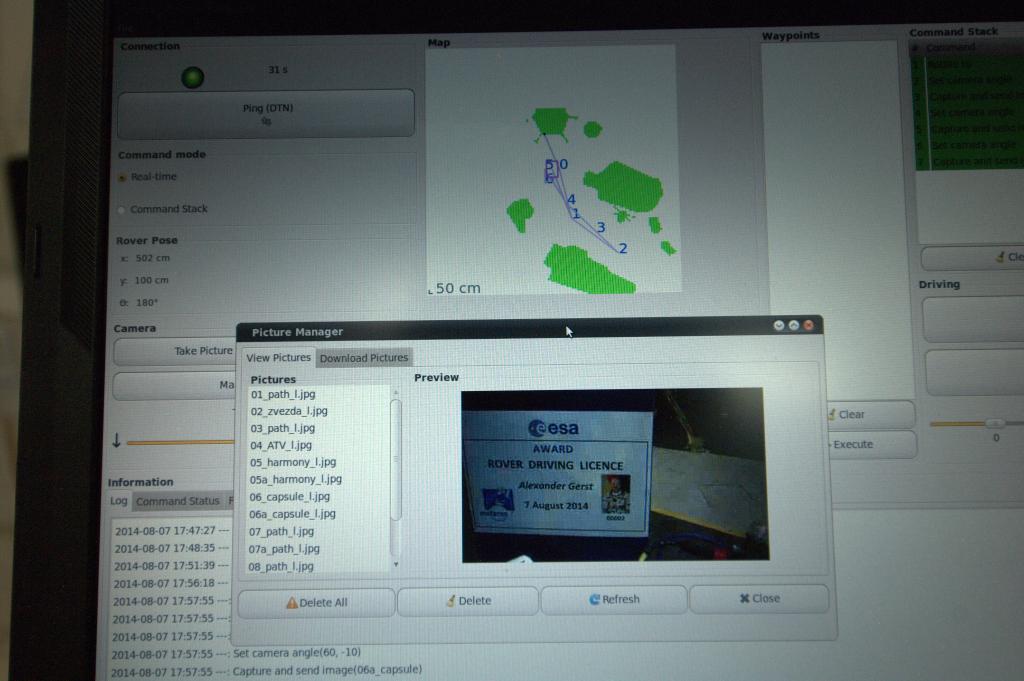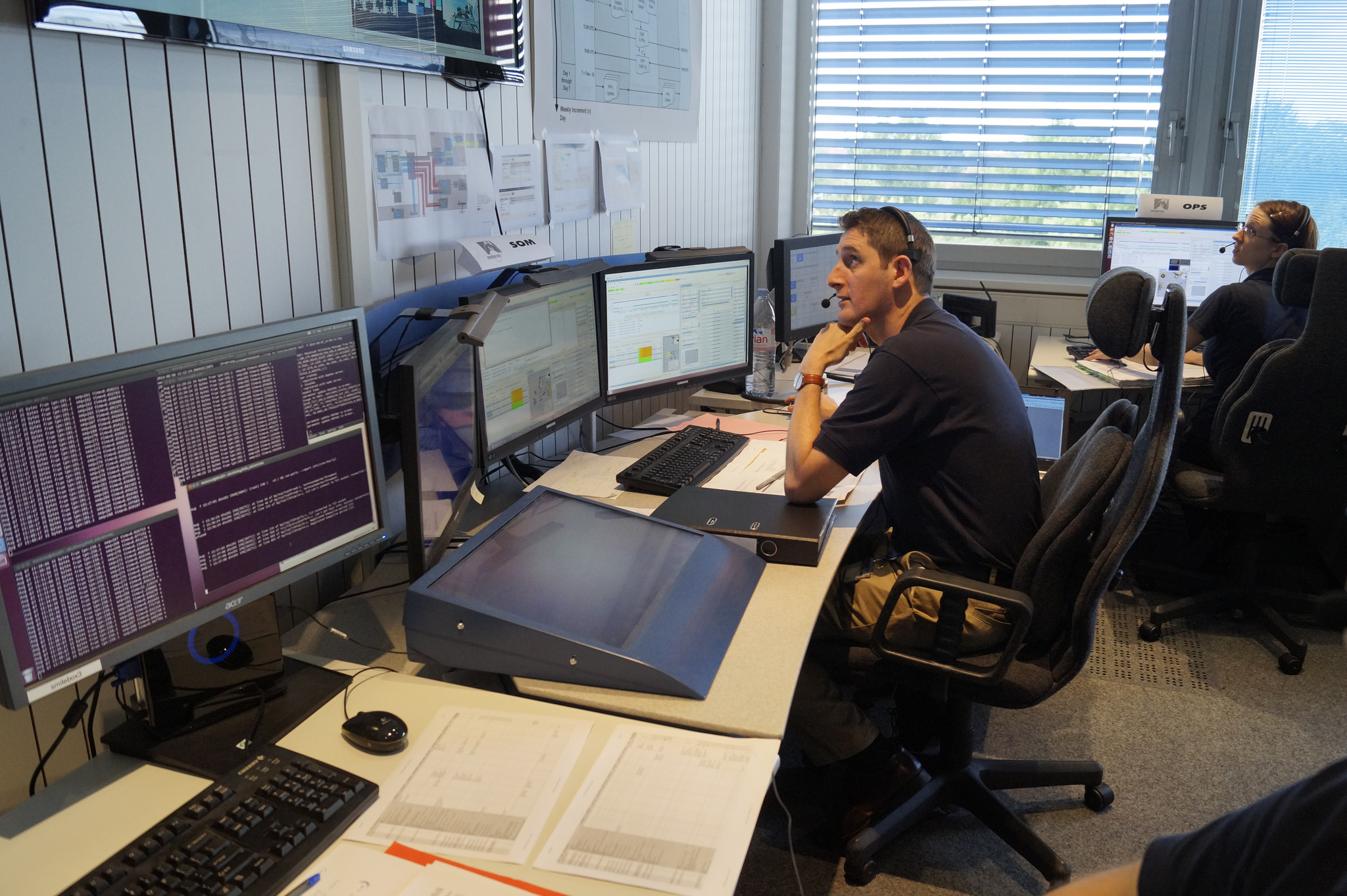Astronaut in Space Test Drives Robot on Earth (Video)
Test-driving a new rover is a routine procedure for space scientists, but last week's trial was different: While the rover was here on Earth, its operator was floating 250 miles (400 kilometers) above on the International Space Station.
European Space Agency astronaut Alexander Gerst drove the Eurobot rover remotely from space on Aug. 7, commanding the robot through a series of complicated maneuvers using a new "space Internet" connection.
"This was the first time Eurobot was controlled from space as part of an experiment to validate communication and operations technologies that will ultimately be used for future human exploration missions,"Kim Nergaard, head of Advanced Mission Concepts at the European Space Operations Centre (ESOC), said in a statement.

The Eurobot rover test brought together many people in many different places. While Gerst was in orbit, Eurobot cruised around an ESA facility in the Netherlands. Meanwhile, "ground control" was at the European Space Operations Centre in Germany, and communications were routed with the aid of NASA and a facility in Belgium.

During the 90-minute test drive, Gerst used a laptop controller to guide Eurobot through a sequence of complex moves, also directing it to snap a few pictures. To steer Eurobot, Gerst relied on feedback of telemetry data and pictures that the rover itself beamed back to the space station. ESA scientists awarded Gerst and honorary rover driver's license to mark the event.
"Remote-controlled a ESA planetary rover on Earth today," Gerst wrote in a Twitter post after the test. "No new life forms discovered, but received new qualification."
Astronauts and engineers will one day need a specialized space Internet connection like this one to control rovers on other worlds, such as the moon and Mars, ESA officials said. The new network link that Gerst used to drive Eurobot is a step in this direction. It can store commands if the signal is interrupted and the connection is dropped. Once the operator and robot re-establish connection, the network sends the stored commands.
Get the Space.com Newsletter
Breaking space news, the latest updates on rocket launches, skywatching events and more!

Gerst's Eurobot drive was the second experiment under ESA's Multi-Purpose End-To-End Robotic Operations Network (Meteron) project, which is designed to help prepare for future joint human-robotic exploration missions. NASA astronaut Sunita Williams performed the first such test in 2012 using an earlier version of the network.
Eurobot is equipped with a pair of arms with interchangeable tools attached at the ends. The rover can carry an astronaut and can be operated from Earth or from the ISS. It also includes a camera that can generate images in 3D. ESA scientists hope to someday remotely steer Eurobot to explore other worlds.
Follow Kelly Dickerson on Twitter. Follow us @Spacedotcom, Facebook or Google+. Originally published on Space.com
Join our Space Forums to keep talking space on the latest missions, night sky and more! And if you have a news tip, correction or comment, let us know at: community@space.com.

Kelly Dickerson is a staff writer for Live Science and Space.com. She regularly writes about physics, astronomy and environmental issues, as well as general science topics. Kelly is working on a Master of Arts degree at the City University of New York Graduate School of Journalism, and has a Bachelor of Science degree and Bachelor of Arts degree from Berry College. Kelly was a competitive swimmer for 13 years, and dabbles in skimboarding and long-distance running.









